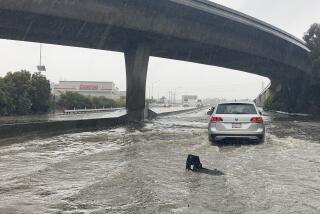Ready for disaster? Here are some items you may not have thought of

Emergency medical kit by Simpler Life Emergency Provisions.
What are we going to wish we had on hand after a disaster? For those of us who have prepared our preparedness kits but still have the nagging feeling we’re forgetting something, we’ve found three experts to help us fill in the blanks.
Training season
Bud Darling, owner of Safe N’ Ready Emergency Supplies in Pasadena, compares emergency preparations to preseason training for the NFL. “Nobody knows exactly what they’re going to meet, but if you practice, when the reality gets there you’re not afraid of it.”
Darling and his wife are members of the Community Emergency Response Team (CERT), a nationwide program that trains civilians to manage and extinguish small fires, control bleeding, treat shock, open airways for breathing, provide basic first aid, safely execute light search and rescue procedures, organize groups of spontaneous volunteers, and collect information to provide to first responders. The free program is offered in Los Angeles County to adults ages 18 and over, and registration information is available online at www.cert-la.com/basic or by calling the Los Angeles Fire Department CERT unit at (213) 893-9840.
“Probably the biggest mistake people make is believing that somebody else is going to come and rescue them,” Darling says. “You need to stand on your own.”
Organize ahead
“When I give disaster preparedness workshops,” says Judith Kolberg, author of “Organize for Disaster,” “I have people write down 10 things they’re going to grab if they have a day’s warning, then narrow it down to five … then narrow it to three. Really know ahead of time what you need to have,” says Kolberg. “If you’re lucky enough to have some warning, you can pull things together … but sometimes you just have seconds or minutes. Knowing ahead of time what’s valuable to you is important.”
It’s important, Kolberg says, to save the details of personal accounts, log-in information, and scanned documents ahead of time. “There’s a whole bunch of stuff on the computer you have to give a little bit of thought to. If you’re a small business owner or work out of your home, you need to have all the [digital files] you would need in order to pick up and start your business again. You can save it with a flash drive.”
Kolberg also recommends uploading important digital collections such as photos or genealogy to the cloud (using sites such as Shutterfly.com for photos or Ancestry.com) and creating a Twitter account if you don’t have one. “It may help you communicate in a disaster.”
Meet-up and meds
Russ Paulsen, executive director for community preparedness and resilience services at the American Red Cross in Washington, D.C., says there are two relatively easy steps that are often forgotten when it comes to worst-case scenario plans. The first? A communication plan. If the phones don’t work, agree upon a physical location to meet.
The second? Maintenance medication or medicine, like an asthma inhaler or EpiPen. “Shelters will generally have something for you to eat and a place to be, but shelters aren’t pharmacies.” Paulsen says.
ALSO:
Emergency supplies: Tools to put on the list for earthquakes and more
From the Archives: Imagine: Rain, rain, stored away
Green ‘Gypsy Kitchen’ on wheels: Living artfully in smaller spaces


